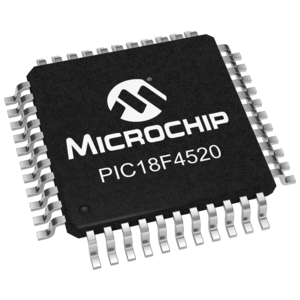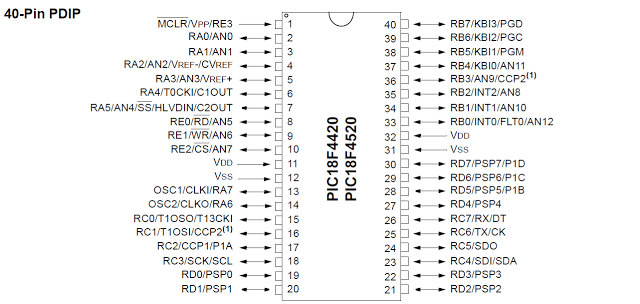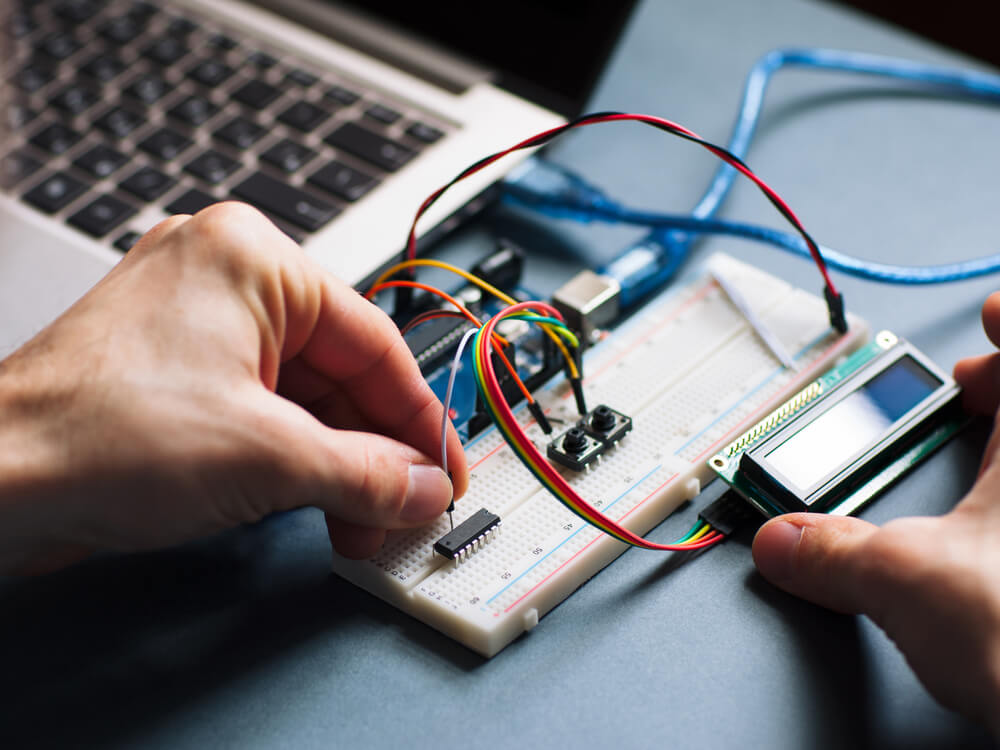PIC MICROCONTROLLER
Page Contents
PIC stands for peripheral interface controller
Whereas F stands for Flash it represents the type of memory used,
In 2000, Microchip introduced the PIC18 architecture.Unlike the 17 series,with a large number of device variants presently in manufacture. In contrast to earlier devices, which were more often than not programmed in assembly, C has become the predominant development language.
PIC18F4520

Parameters of PIC18F4520 micro controller

Pin Diagram Of PIC18F4520

Features of PIC microcontroller
CPU
System
nanoWatt Power Managed Modes
Analog Features
Peripherals
Advantages
- Small instruction set to learn and implement
- PIC has RISC architecture
- Built-in oscillator with selectable speeds
- Easy entry level, in-circuit programming plus in-circuit debugging PICkit units available for less than $50
- Inexpensive microcontrollers
- Wide range of interfaces including I²C, SPI, USB, USART, A/D, programmable comparators, PWM, LIN, CAN, PSP, and Ethernet
- Availability of processors in DIL package make them easy to handle for hobby use.
Comparison between PIC Microcontroller and 8051 Microcontroller
8051- if u want a cheap controller with basic functions then 8051 will suffice . It will be of great use in your low-cost college projects.
PIC- Cheap , used in refrigerators and low budget projects .
8051 and PIC need multiple clock cycles per instruction. AVR and ARM execute most instructions in a single clock cycle.
8051 and PIC have limited stack space – limited to 128 bytes for the 8051, and as little as 8 words or less for PIC. Writing a C compiler for these architectures must have been challenging, and compiler choice is limited.
Real Time Applications and Projects of PIC Microcontroller
4)PIC can be used as Timers, counters
5)We can design a calculator using PIC
Download Datasheet of PIC18F4520
Check out how to use PIC microcontroller using PICKit 3 or Proteus.






